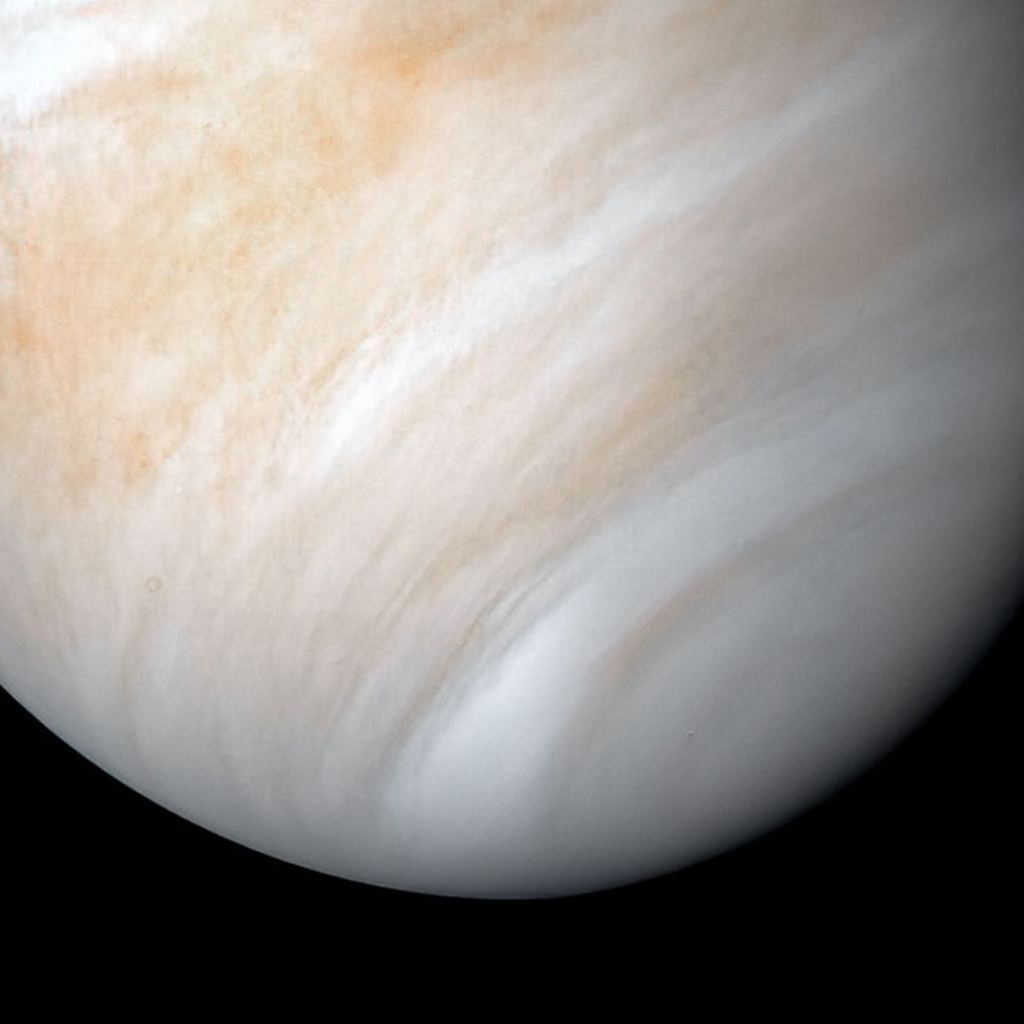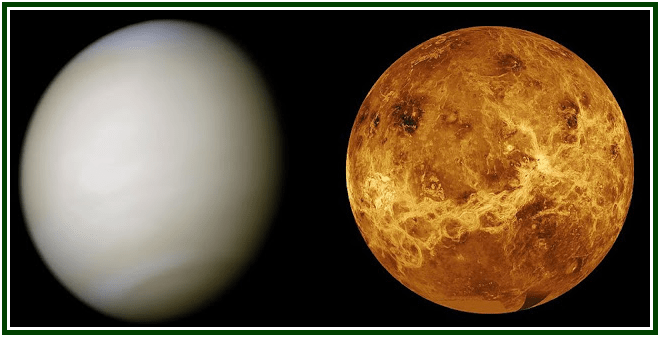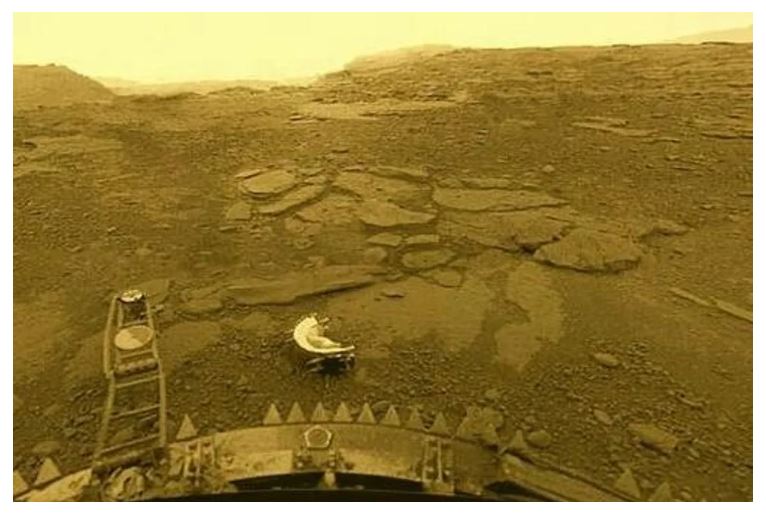A Biosignature
Last week, an incredible announcement was made about the search for extraterrestrial life: Phosphine gas detected in the clouds of Venus – a potential indicator of life or “biosignature.” Now some gases might be a false positive for biosignatures because they can be created by other chemical processes on a planet like photochemical processes in the atmosphere or geological processes beneath the surface that create a given gas. For example, methane can also be a biosignature, and we’ve been hunting it down on Mars, but we know that methane can also be created geologically. Finding phosphine in Venusian clouds is truly remarkable because we don’t presently know of any way to create phosphine abiotically or without life being a part of the equation. Question is – how much life??

“Plausibility”
Once a biosignature is discovered, a method to rule out false positives is to look at the concentration of the gases in question and see if a plausible amount of life could generate the gas. Phosphine gas in Venusian clouds was detected at concentrations of 20 ppb (parts per billion). If the required biomass to create this concentration of gas is high, then an otherwise unfamiliar abiotic process may still be at work. Because while Venus may have life, requiring high concentrations of life on a world generally thought to have zero surface habitability starts lowering your alien credibility.
Past studies have already looked at calculating required biomass to determine how plausible it is that a biosignature gas is in fact the by-product of living beings and not some other unknown abiotic process. Seager, Bains and Hu in 2013 published a study with the foresight that most of our ET hunting was likely going to be looking at distant alien atmospheres to determine if the atmospheric chemistry was a signal to us that something lived there. One such signal is chemistry out of balance – gases co-existing that shouldn’t, or an overabundance of a particular gas. For example, if somebody were looking at our own planet from light years away, they would see that the concentration of oxygen in our atmosphere is ten orders of magnitude higher than it should be for chemical balance. That unbalancing is from life on Earth creating oxygen and adding it to the atmosphere. We know of no other abiotic process that could account for that degree of disequilibrium. Another signal is the presence of a gas with no known source other than life. That’s where phosphine comes into play. In the absence of other known processes, Dr. Sara Seager and her team explored “whether a biosignature gas can be produced by a physically plausible biomass.” And while we don’t know exactly what an alien organism would be, we do know that some chemical and physical processes are universal. Only so much energy can be derived from certain chemical reactions. And so, the study used these universal principals to avoid a trap of “terracentricity” – basing all biological models on life we know of on earth.

Based on models like those of Dr. Sara Seager and her team above, a new study by Mansavi Lingam and Abraham Loeb was released on September 16th that applied the models to the recent discovery of phosphine on Venus. The results?
“We find that the typical biomass densities predicted by our simple model are several orders of magnitude lower than the average biomass density of Earth’s aerial biosphere.” – Lingam and Loeb 2020
In other words, far less life would have to live in the clouds of Venus to create the level of phosphine we’ve detected than the amount of life living in the clouds of our own planet – a plausible amount of life. That is really exciting because it means that we can still count life as a possible source of the phosphine gas. A small amount of possible life giving off a signal we can see from Earth letting us know it’s there. Were the amount of required biomass really high, we might then have to look for other abiotic processes we’re not aware of as it is less likely that high concentrations of life exists on Venus.

– Shebandowan Lake Sunset, Ontario – C. Matthew Cimone
Life in the Clouds
So now we get to the exciting part of speculating what type of life could be creating the phosphine. As far back as 1967, great science communicator and astronomer Carl Sagan, and biophysicist Harold Morotwitz speculated about life in the clouds of Venus. For the first few billion years of its history, Venus may have been more suited to life only to become the Venus we’re familiar with in the last billion. Life not only had time to evolve on the surface but possibly emigrate to the clouds as well. Shrouded in clouds and super dense atmosphere, the surface of Venus is a slightly uncomfortable 460 Celsius – sufficiently hot to melt lead. “Cold” days on Venus means lead frost. So the surface is out for life. But the clouds are a different story. In the clouds 50km above Venus’ surface, temperatures drop to around 5 C where water droplets can form. Sagan said that “it is by no means difficult to imagine an indigenous biology” in that layer of clouds. Sagan and Morowitz envisioned living “float bladders” about 4cm in diameter carrying a bubble of hydrogen inside them to stay aloft.

However, contemporary research suggests that microbial life might be better suited to the Venusian clouds. Research by Dr. Sara Seager predicts microbes existing within droplets in the cloud layers because “the requirement for a liquid environment is one of the general attributes of all life regardless of its biochemical makeup.” Problem is that once the droplets grow large enough, they precipitate to lower altitudes falling into destructive temperatures. The life cycle then of these microbes would vary between a state of “small, desiccated spores and larger, metabolically active, droplet-inhabiting cells.” So, the proposed microbes live in a nutrient-rich droplet of water. The water condenses, but as it precipitates and is evaporated in the lower cloud levels, around 33-48km, the microbe desiccates. In a desiccated state, it is lifted by winds which return the microbe to higher altitudes where it rehydrates itself in a new water droplet home. And during the microbe’s metabolically active time within a drop, it is potentially creating…phosphine.
I would’ve never seen this coming. In my imagination, it was going to be Mars first. I’ve given so many planetarium shows where we’d fly through the solar system in a hypothetical quest for life outside of Earth and always glossed over Venus as “probably too hot.” And yet, one of the best possible biosignatures for life have come from this hellish world. But that’s science! We speculate, test, learn, and perhaps discover something more astonishing than we could’ve imagined (though I am still rooting for float bladders. #teamVenusfloatbladders)
More to Explore:
Phosphine Gas in the Cloud Decks of Venus – Nature
Phosphine Detected in the Atmosphere of Venus – An Indicator of Possible Life? – Astrobiology
Did Scientists Just Find Signs of Life on Venus? – Universe Today
What’s on the Surface of Venus: A History of the Venera Program” – Universe Today Video
Life in the Clouds of Venus? Sagan and Morowitz 1967 – Nature
The Venusian Lower Atmosphere Haze as a Depot for Desiccated Microbial Life – Seager at al 2020

